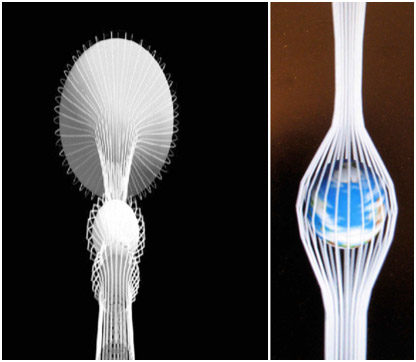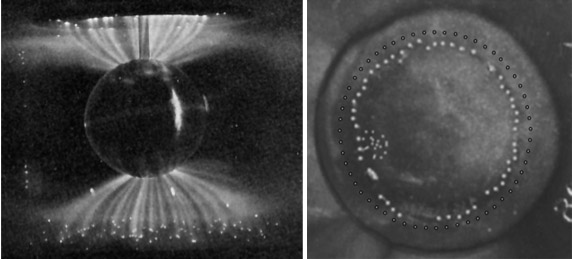* Before I reply to Webo, I want to get the following posted. This is from the link I mentioned a few posts back. I'll underline the more pertinent parts.
http://www.ucmp.berkeley.edu/carboniferous/mazon.html
Localities of the Carboniferous: Mazon Creek, Illinois
* There are two different groups of fossils from the Mazon Creek area:- On the dumps of coal strip mines ... not far from ... Chicago, collectors find curious rounded nodules of rock. These nodules are concretions of siderite, or iron carbonate, and naturally split along the middle. With a careful tap from a rock hammer, a split nodule may reveal a beautifully preserved seed-fern leaf, a shrimp or millipede, or even a Tully monster. This is the Carboniferous-age Mazon Creek locality (or more accurately a set of localities called the Francis Creek Shale, of which Mazon Creek itself is one) whose uniquely preserved fossils provide a glimpse of the history of many organisms that would otherwise have left little trace. Similar concretions are found over a wide area of northern and eastern Illinois, at several sites. However, all of these are collectively known as "Mazon Creek" fossils.
- Some "Mazon Creek" localities are known for terrestrial fossils, including beautifully preserved plants and, rarely, insects, centipedes and millipedes, scorpions and other arachnids, and even small amphibians. Others, which formed under marine conditions, include jellyfish and other cnidarians, crustaceans, molluscs, worms, and rare fish. Shown here is a polychaete annelid, Fossundecima, preserved in a concretion that has been split open.
- The area of the Mazon Creek fossils is riddled with coal seams. The coal seams are composed of alternating layers of coal and shale [like mudstone]. Each coal layer represents the ancient forest, fossilized and compressed into coal. The shale beds above and below the coal seams range in depth from twenty to sixty feet.... In some areas, there are sixteen coal seams [with a] shale bed immediately below each coal layer....
- [C]oal strip mining is common, in which the top layer of shale is cut away in order to expose the coal. The shale that is cut away is deposited in spoil heaps [where] most of the fossils belonging to Mazon Creek are found in nodules of ... iron carbonate....
- The nodules are made from sediment carried down by water, burying the organisms and hardening around them. The sediment was cemented with iron carbonate to form a hard nodule distinct from the shale around it. The nodules range in size from a fraction of an inch to more than twelve inches long. The average size of a nodule is five inches in diameter lengthwise and two inches in diameter [at the width?].
- ... [T]he fossils are mainly [but not all] impressions or incrustations of organisms [after the organism had decomposed, leaving a cavity that would] then be filled with coal, calcite, siderite, or any other form of sediment. By the nature of the formation of impressions, the fossils usually lie parallel to the plane of sedimentation.
- ... Many of the specimens occur individually within the nodule, but there are occasions in which animal fossils are found in association with plant debris. It is also sometimes possible to determine the nature of the gut content in soft-bodied organisms through analysis of the fossil.
- The presence of upright stems, and bivalves that are not parallel to the plane of sedimentation indicates that the fossils were formed by the quick burial of organisms during some great catastrophe. Other clues leading to this hypothesis are the presence of fossilized upright trees that can reach nine feet in height. There is also no evidence of perturbations [damage by scavenging etc] by animals in some of the fossils. ... Also, if the environment were aqueous, clams and other bivalves would cut through sediment while making their burrows, and while such clam trails are evident, it is sometimes completely absent from a certain layer of shale, suggesting that the layer of shale was laid down quickly and to a great depth.
- Other evidence for the quick deposition of sediment on organisms as seen in a great catastrophe is provided by the presence of soft-bodied organisms in the fossil record. In order for such organisms to be preserved in the fossil record, they must be buried rapidly with the inhibition of anaerobic decomposers, and the development of concretions must also be rapid. These conditions can only be met if a catastrophe dumped massive amounts of sediment on the organisms while they were still alive. One side [e]ffect of the rapid burial of the organisms is that they are preserved very well because there was not enough time for the decomposers to decompose the organism. Sometimes the impression is still lined with the [skeletal] chitin present in arthropods.
- ... Common groups found in the flora of Mazon Creek are extinct and extant species of pteridophytes[,] ... often ... the size of large trees.... Some examples ... are the lycopod scale trees, which were extremely abundant worldwide and were much larger than lycophytes are today. An undistorted lycopod megaspore with its parenchymatous gametophyte (the gametophyte contained tissue that was capable of dividing) was found by Darrah as mineralized tissue, organic tissue that was replaced with [probably transmuted from] minerals from the environment.
the Braidwood Biota: a coal swamp forest that is a mixture of ... terrestrial and freshwater environments;
and the Essex Biota: a sub-aqueous, interchannel flood plain inhabited mainly by freshwater biota and sometimes by marine biota for brief periods.
The Essex ecosystem has 3214 specimens; about 50% are fauna, 45% of which are Arthropods;
the Braidwood has 1213 specimens; about 1% are fauna, 79.5% being Arthropods.
These marine invertibrates, Coelenterates, echinoderms, and the Tullimonster, are exclusively found in the Essex Biota. * Fauna means animal species.
The flora ... compares with that in the tropics today; there are no annual rings, suggesting uniform growing conditions without seasonal fluctuations.


